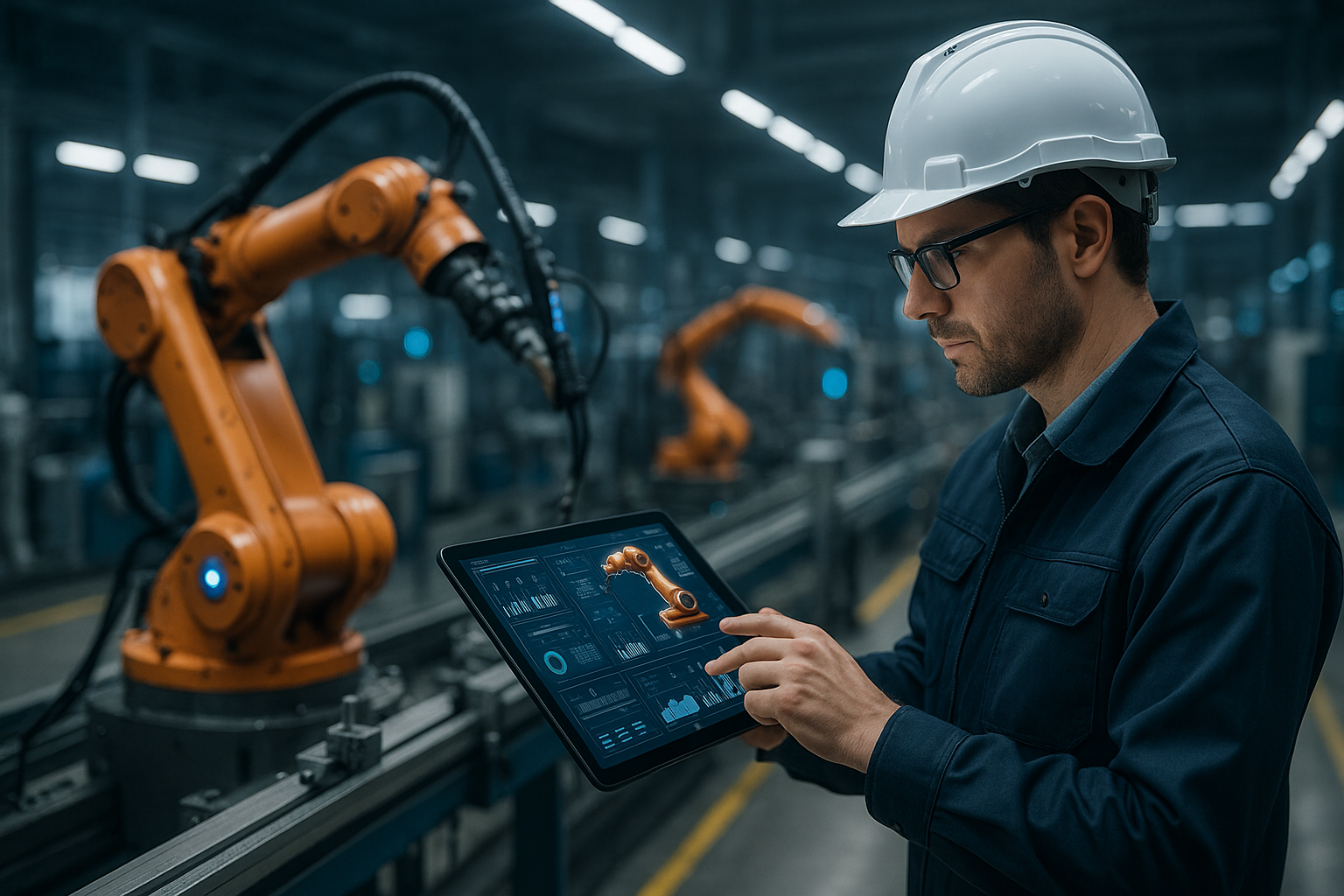Revolutionizing Medium-Sized Factories: The Impact of Robotic Arms on Efficiency and Productivity
In today’s competitive manufacturing landscape, medium-sized factories are increasingly turning to robotic arms to streamline operations, reduce errors, and boost overall productivity. These versatile machines handle repetitive tasks with precision, freeing human workers to focus on more complex activities. By integrating robotic arms into their production lines, factories not only enhance efficiency but also position themselves for sustainable growth and technological advancement.

Manufacturing landscapes across the globe are witnessing a significant shift as robotic arms become integral components of medium-sized factory operations. This technological evolution represents more than just automation; it embodies a fundamental change in how manufacturers approach productivity, quality, and competitive positioning in today’s market.
Key Benefits of Robotic Arms for Medium-Sized Factories
Robotic arms deliver substantial advantages that directly impact factory performance and profitability. Precision manufacturing stands as the primary benefit, with robotic systems achieving accuracy levels that consistently surpass human capabilities. These machines operate with repeatability tolerances measured in fractions of millimeters, ensuring product consistency across thousands of units.
Operational efficiency improvements manifest through continuous operation capabilities. Unlike human workers, robotic arms function around the clock without fatigue, breaks, or shift changes. This continuous operation translates to increased production capacity and shortened delivery times, crucial factors for medium-sized manufacturers competing against larger corporations.
Workplace safety enhancements represent another critical advantage. Robotic arms handle hazardous materials, operate in extreme temperatures, and perform repetitive tasks that typically cause workplace injuries. This safety improvement reduces insurance costs, workers’ compensation claims, and production interruptions due to accidents.
Applications and Use Cases in Modern Manufacturing
Robotic arms excel in diverse manufacturing applications, adapting to various industry requirements. Assembly operations benefit significantly from robotic precision, particularly in electronics manufacturing where component placement demands exact positioning. Automotive parts production utilizes robotic welding, painting, and material handling to maintain consistent quality standards.
Packaging and palletizing operations showcase robotic versatility, handling products of different shapes, sizes, and weights. Food processing facilities employ specialized robotic arms designed for sanitary environments, managing tasks from ingredient mixing to final packaging while maintaining strict hygiene standards.
Quality inspection processes integrate robotic arms with advanced vision systems, enabling automated defect detection and product sorting. This combination reduces human error in quality control while increasing inspection speed and accuracy.
Material handling applications span from raw material loading to finished product distribution. Robotic arms efficiently move heavy components, reducing physical strain on workers and minimizing material damage during transport.
Choosing the Right Robotic Arm for Your Factory
Selecting appropriate robotic systems requires careful evaluation of specific factory requirements and operational parameters. Payload capacity stands as the fundamental consideration, determining the maximum weight a robotic arm can handle effectively. Medium-sized factories typically require arms capable of handling 5 to 50 kilograms, depending on their product specifications.
Reach and workspace dimensions must align with existing production line layouts. Collaborative robots, or cobots, offer flexibility for facilities with space constraints, working safely alongside human operators without extensive safety barriers.
Programming complexity varies significantly between robotic systems. User-friendly interfaces and intuitive programming languages enable faster implementation and reduce training requirements for existing staff. Advanced systems offer drag-and-teach programming, allowing operators to guide robots through desired motions manually.
Integration capabilities with existing manufacturing systems determine implementation complexity and costs. Modern robotic arms feature standardized communication protocols, enabling seamless connection with programmable logic controllers, enterprise resource planning systems, and quality management software.
| Robotic Arm Model | Manufacturer | Payload Capacity | Reach | Cost Estimation |
|---|---|---|---|---|
| UR10e | Universal Robots | 12.5 kg | 1300 mm | $35,000 - $45,000 |
| KUKA KR AGILUS | KUKA Robotics | 6-10 kg | 700-1100 mm | $40,000 - $55,000 |
| ABB IRB 1200 | ABB Robotics | 7 kg | 700-900 mm | $30,000 - $42,000 |
| Fanuc LR Mate 200iD | Fanuc Corporation | 7 kg | 717 mm | $25,000 - $38,000 |
| Yaskawa HC10 | Yaskawa Electric | 10 kg | 1200 mm | $28,000 - $40,000 |
Prices, rates, or cost estimates mentioned in this article are based on the latest available information but may change over time. Independent research is advised before making financial decisions.
Implementation strategies significantly influence robotic arm success in manufacturing environments. Phased deployment approaches allow factories to gradually integrate automation while maintaining production continuity. Starting with single-station automation provides valuable experience before expanding to multi-robot systems.
Training programs ensure successful technology adoption. Comprehensive education covering robot operation, maintenance, and basic programming empowers existing staff to manage new systems effectively. Many manufacturers offer extensive training packages as part of their robotic arm solutions.
Return on investment calculations demonstrate the financial viability of robotic implementation. Medium-sized factories typically achieve payback periods between 12 to 24 months, depending on labor costs, production volumes, and operational efficiency gains. These calculations should include direct cost savings, productivity improvements, and quality enhancement benefits.
The integration of robotic arms in medium-sized factories represents a strategic investment in competitive positioning and operational excellence. As technology continues advancing and costs decrease, these automated systems become increasingly accessible to manufacturers seeking sustainable growth and market differentiation. Success depends on careful planning, appropriate system selection, and comprehensive staff preparation for the technological transition.




